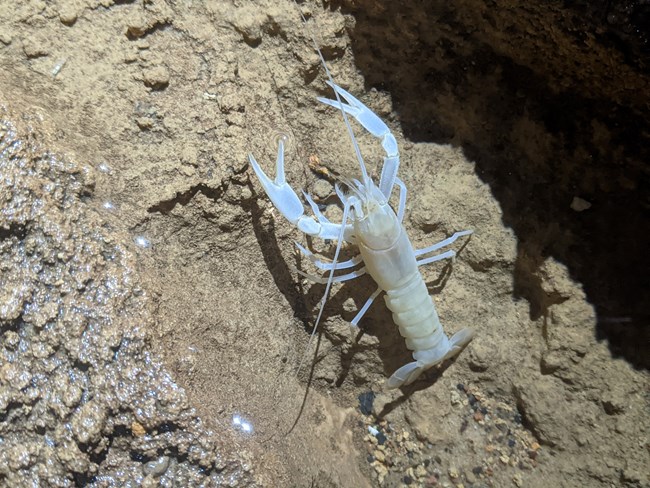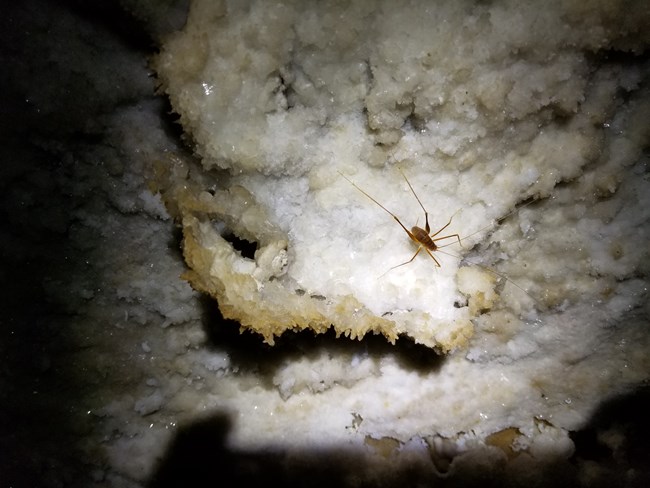|
While caves present unique obstacles to their inhabitants, a plethora of life can be found inside not only Mammoth Cave, but also the hundreds of smaller caves located within the park boundaries.These animals found inside caves can be classified into three categories: Trogloxenes - in Greek, troglos means cave, and xenos means guest. Trogloxenes come and go from caves, they typically use cave habitats as hibernation, nesting, or birthing spots. They are not adapted to spending long amounts of time in the cave, nor will they spend their entire lives in the darkness. Bats and moths are trogloxenes. Troglophiles - troglos meaning cave, and phileo refers to love. These organisms prefer to live inside a cave but may leave the cave to search for food, a cleaner habitat, or to mate. Crustaceans like crayfish are an example of a troglophile, they can live their entire lives inside or outside a cave system. Troglobites - troglos for cave, and bios for life. Troglobites spend their entire life cycle in caves. They only live in underground habitats, adapted to survive in total darkness. Troglobites have depigmentation, a decrease or total loss of eyesight, a slow metabolism, and are able to efficiently digest and consume food. Troglobites cannot survive on the surface nor travel between cave systems, typically they are endemic to a single cave or a single cave system. The endangered Kentucky cave shrimp is an example of a troglobite. 
NPS Photo/ Anya Gupta Cave Aquatic EcosystemAs rainwater percolates through the soil, it washes dissolved organic matter into cave streams, where microscopic organisms feast on the organic matter. Several kinds of tiny invertebrates, such as isopods, snails, and cave shrimp, graze on the microbes growing on rocks in the stream. Some of these grazers are prey for cave crayfish and fish. Cave fish are the top predators in the cave aquatic ecosystem. 
NPS Photo Terrestrial Cave EcosystemSome cave inhabitants, such as bats, cave crickets, and woodrats go out at night to feed in forests and grasslands, drink from the rivers or wetlands, and then return to the cave to roost or nest in relative safety. The eventual guano and droppings are the food base for a surprising number of cave-adapted creatures. Restoring Cave EcosystemsCrystal Lake CleanupRestoring Cave EcosystemsMammoth Cave Lint Bunnies |
Last updated: September 24, 2023
